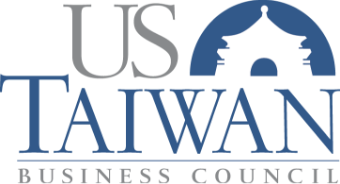Financial Times Editorial:
The west should not walk into Beijing’s Taiwan trap on chips
A desire to ‘onshore’ vital semiconductor production must not be allowed to leave Taipei isolated
(Published December 12, 2022)
Editorial by Rupert Hammond-Chambers, President, US-Taiwan Business Council
Published by the Financial Times
Last week, US president Joe Biden attended the “first tool-in” ceremony at Taiwan Semiconductor Manufacturing Company’s new fabrication plant, or “fab”, opening in Phoenix, Arizona. He heralded the moment as a “game changer” for American efforts to build its domestic chip capabilities.
It is important to understand what TSMC’s investment says about the US’s role in the global supply chain. Critically, the US and Europe must walk the line between onshoring vital production capacity while not marginalising and weakening Taiwan economically in the process (which would be to deliver to China one of its core goals).
China’s broader strategy toward Taiwan is designed to pressure it into accepting unification under the “one-China principle”. Were Taiwan to accept this version of unification, it would represent a total political capitulation and its economic absorption into the People’s Republic of China. Beijing wants to achieve this longstanding goal without firing a shot.
In 2021, the commander of US troops in the Indo-Pacific at the time, Phil Davidson, stated in congressional testimony that China may have the capability to successfully attack Taiwan by 2027. Since then, we have seen an explosion of arbitrary dates bandied about regarding China’s ability to use force to absorb Taiwan into the PRC.
Recently, US Treasury secretary Janet Yellen warned American businesses to reassess their commitments to invest in Taiwan. Her comments targeted the geostrategic risks, but her rhetoric plays directly into Beijing’s coercive strategy to weaken the island.
That strategy is designed to create a sense of inevitability over Taiwan’s future, to raise the cost of doing business in Taiwan by increasing tensions in the Strait and to warn the US and allies not to involve themselves. The trip to Taiwan this summer by House of Representatives Speaker Nancy Pelosi provided a superb opportunity for China to execute this strategy. It had the desired effect, as global governments and companies alike have since raised the alarm over their business interests in Taiwan.
The semiconductor sector plays a crucial role both in binding Taiwan to the global community and in providing resources for the island. TSMC’s investments in the US and Japan, and rumblings about its plans to invest in Europe, are already causing considerable angst in Taipei over the potential for “hollowing out” the crown jewel of Taiwan’s economy.
Premier Su Tseng-chang has already stated that Taiwan’s most sophisticated process technology will remain on the island. TSMC is also not free to transfer its technology wherever it wishes, as this requires Taiwan government approval. There is a balancing act between maintaining strong bilateral ties with Taiwan and ensuring Taiwan’s long-term economic viability, but there’s a space between the world’s expectations and what Taiwan can and should deliver.
Taiwan’s government is attempting to get ahead of the economics and politics of this issue by passing its own legislation to boost semiconductor investment incentives. However, the presidential election season has arrived, with polls to elect a new president and parliament scheduled for January 2024.
The Kuomintang (KMT), Taiwan’s main opposition party, just won a sweeping island-wide series of local elections. It is seeking to maintain the momentum by hammering away on the issue of economic vulnerability caused by external semiconductor migration. This preys on Taiwan’s sense of isolation and creates heightened anxiety about the long-term viability of the island’s “silicon shield” — the notion that its centrality in the semiconductor sector affords it economic and political weight in global affairs. China’s state-controlled media has already picked up on this issue and has entered the fray. KMT’s strategy fits perfectly with Beijing’s coercive economic strategy.
The US and leading economies in Europe should be cautious about minimising Taiwan’s centrality to the sector. They need to highlight onshoring priorities while signalling support for Taiwan’s long-term economic viability. That is a message that will be well received in Taipei, as well as by the global companies that have invested decades’ worth of capital on the island.
The world is beginning to fully grasp the centrality of Taiwan to the global economy. But deciding to exit the country is the wrong response. A weak Taiwan is a vulnerable Taiwan, and would create greater instability and increase the likelihood of conflict instigated by a predatory China. Only peace through strength can deter Xi Jinping — and that’s true for Taiwan’s military prowess as well as for its silicon shield.
